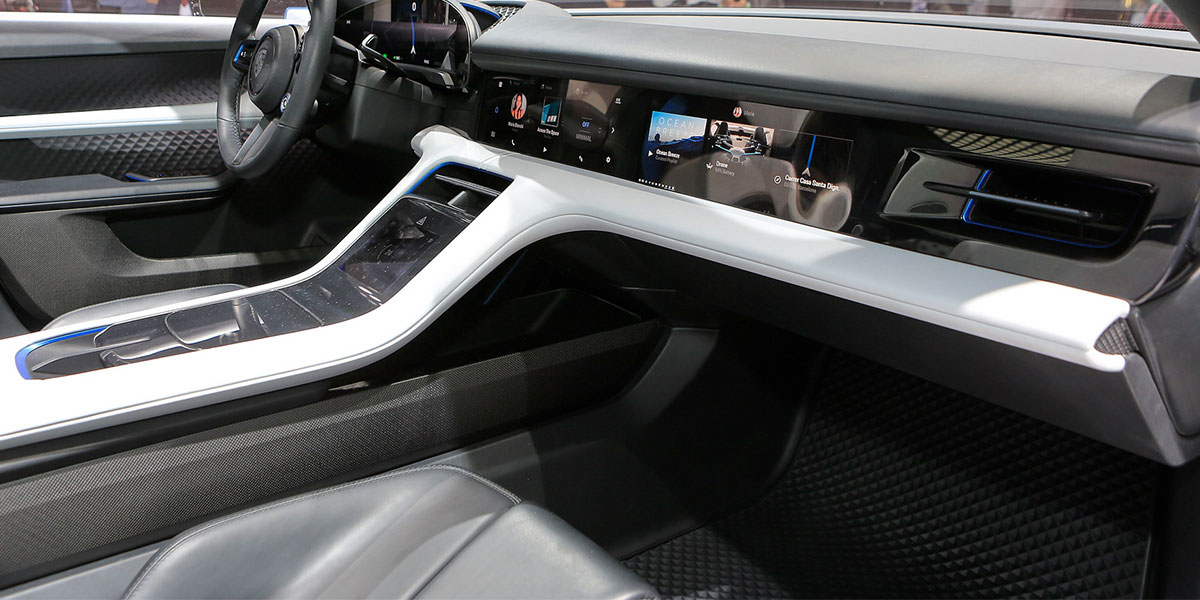
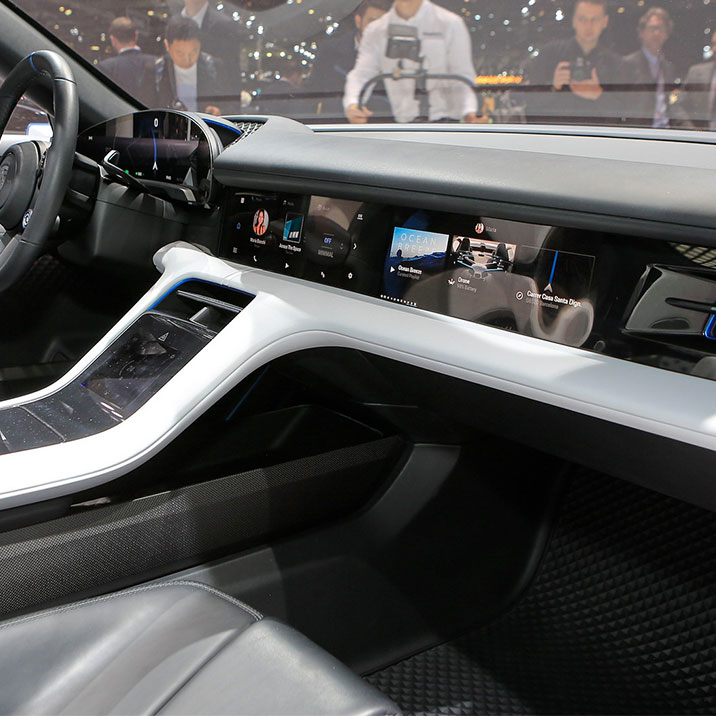


There is a new interaction and experience between drivers and cars due to the intelligent interconnection and automatic driving of cars. We have extracted the key content of automobile electronization - in-car entertainment and information system from these changes for experience trend analysis, aiming to sort out the status quo and potential future trend of current experience, hoping to create a more beautiful travel experience for users in the era of new car networking.
When the Internet is used in the car, what the user needs is the driving travel service experience rather than the car itself, so we add multiple dimensions during HMI experience design and development space analysis:
• Maximized service scenarios
• Cross-industry and cross-channel value
• Service and marketing operation based on user and driving data
• Good user interaction experience
• Cross-platform and multi-screen interaction
• Multi-modal interaction
In HMI experience design, the past technology-based design thinking is eliminated, and the "user-based" design scheme will be more competitive in the era of advocating individuation; in order to improve the status quo, scenario-based, humanized and personalized design will become a trend in the future, helping users achieve better in-car experience.
HMI Experience Design Trend - Scenario-based
The scenario-based design is to explore the complete value experience of "human-car ecosystem", analyze experience needs of users in different usage scenarios, and make breakthrough and innovation in service and interactive experience to truly retain users.
However, there are a lot of homogeneous functions in the current HMI function design, which do not fully explore the actual travel scene needs of users. In the future, HMI will be apt to scenario-based design:
• Avoid the function stacking, find out the usage pain points of users or explore the demand value points, and put forward innovative schemes;
• Provide users with a complete value experience of "human-car ecosystem", and truly retain users;
• Enhance cross-platform and multi-channel user experience, and meet interactive experience needs under different scenarios.
Scenario-based – Maximized User Usage Scenarios
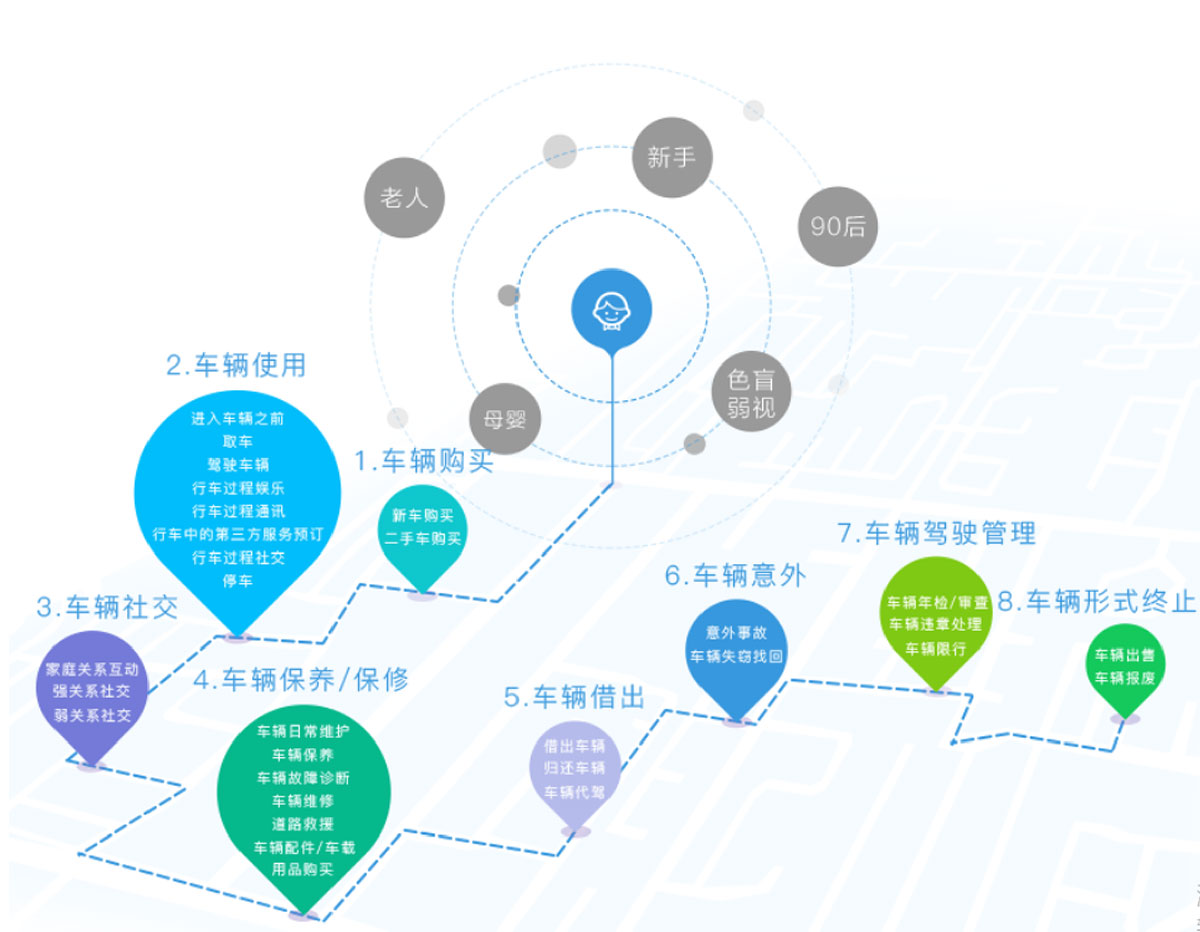
The user scenario will cover the whole life cycle of "human-car" interaction
Scenario-based – Functional Interworking and Technical Application Based on Usage Scenario
Currently, many HMIs in the car have various functional modules, such as entertainment, news, life service, etc., and many car factories have also successfully developed fingerprint recognition, face recognition, self-driving technology, gesture interaction and other functional technologies. However, sometimes these technologies and functions in the actual user usage scenarios are worthless and are not needed by users at all.
The functions provided by high-quality HMI experience will no longer be simply isolated and unrelated functional module stacking. In the future, HMI design should be more based on user scenarios to establish mutual linkage and interworking among various in-car functions, to provide a reasonable function switching, and to select appropriate technologies and interactive modes to achieve the complete scenario design.
Scenario-based - Highly Scenario-based Information and Task Provision
With the technical development, more and more technical configuration and functions are available in the car, so that the multi-functional operation and information feedback can easily cause the "excessive information" to drivers.
HMI information and task provision should be highly based on user scenarios and driving data:
• In the future, the in-car HMI design needs to provide limited and most important information to the drivers according to different usage scenarios and driving conditions in an intelligent and adaptable way as far as possible;
• Based on current driving data and traffic information, the road information (such as obstacles, pedestrians, etc.) that poses a threat to driving safety will be processed, and provided to users in a more concise and convenient way. In addition, the warning and selective guiding will be given.
Scenario-based Space Example: Ridesharing
Changes in consumer preferences, technical breakthroughs and other factors have led to major changes in personal travel. More and more people complete their travel through various means of transportation, and services will be delivered to them according to different user data and needs rather than obtained by themselves. In the future, a series of diversified and on-demand travel schemes will complement the traditional driving travel model, especially in densely-populated cities where private cars are not encouraged.
Furthermore, cars will be used not only for personal commuting, but also for family travel, and will also be used for rental and sharing when they are idle. Moreover, it is necessary to deeply explore the market of different travel models, and consider different travel service and interaction schemes for different car usage models and travel scenarios
Specifically, these travel markets need to be classified by city type, such as population density, economic development level and prosperity, etc. There will be great differences in consumer preferences, policy and regulation, availability and cost of new business models in all these market segments.
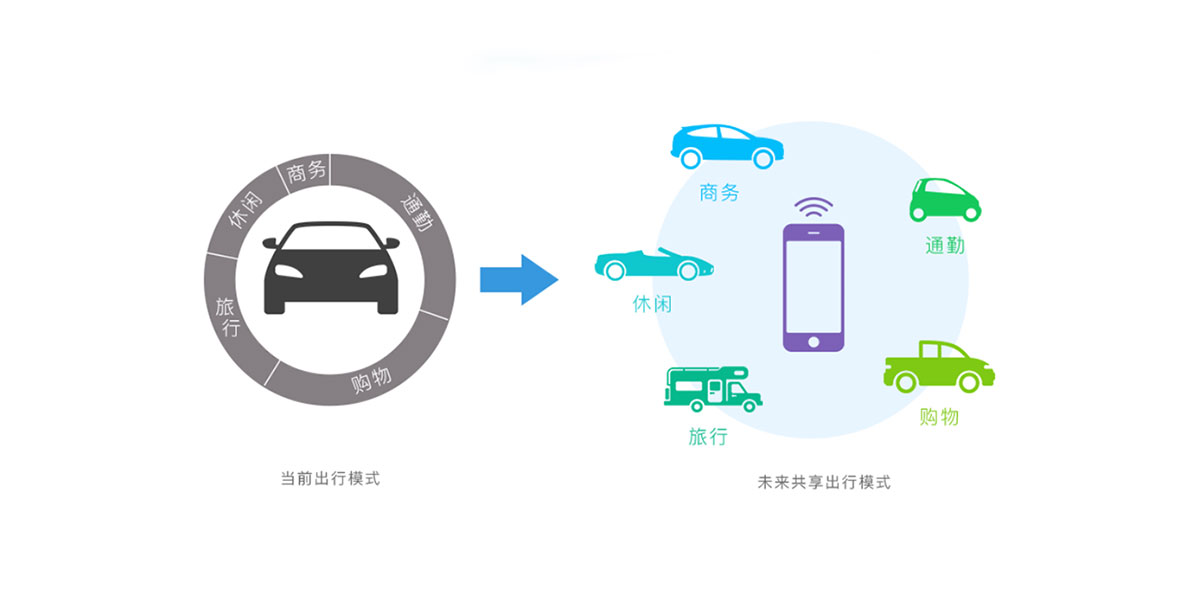
Sample Graph of Ridesharing
HMI Experience Design Trend - Humanized
The humanized HMI experience should be able to minimize the driver's distraction, maximize the information utility of HMI input and output data, and enable users to complete the operation tasks efficiently, easily and happily through the most appropriate interactive mode.
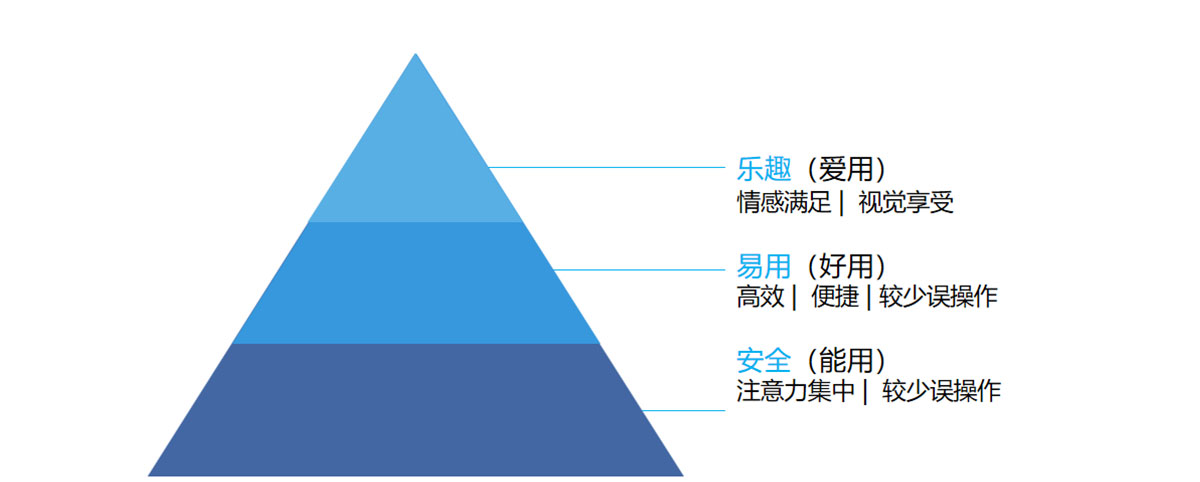
Humanized – Minimized Visual Retention of Users
In the future, the core of HMI design is to minimize unnecessary visual contents, weaken visual forms, and reduce the information load and interference of drivers during driving.
Visual interaction in the interior environment must be designed from the perspective of users (drivers and passengers) rather than designers. The primary purpose of visual experience is safety and efficiency, rather than innovation and novelty. It is necessary to ensure that drivers spend as little time on these visual information as possible and that users focus on the road ahead.
Examples of design directions to reduce the visual retention time of users:
• Readability & readability: the text should be concise and understandable, and graphics and forms should be readable to reduce the information cognition burden of users
• Grouping: the information of relevant content or scheme can be divided into a group, which is helpful for users to establish information structure memory. For example, the music control information can be divided into one group on one screen, and geographic navigation information can be divided into another group.
• Grouping & quantity: it is necessary to ensure that there is the correct priority for the information transmission, and to display as little information as possible each time (within a specific time).
Humanized – Interactive Mode Combining Software and Hardware
The combination of hard interaction and soft interaction is more sufficient to reduce the user's distraction during driving.
Humanized – Cooperation of Multi-channel Interaction
Driver's eyes and ears can be taken as the main interactive way of system, but the single interactive way is a common problem of in-car interaction at present. With multi-channel interaction, we can reduce the burden of excessive visual and auditory information processing during driving, and balance information to all perceptual organs.
In the future, the design of HMI interactive control will be based on the characteristics of the scenario task, and consider the application and cooperation of different interactive channels. During the task control, one interaction channel is the main channel, while other interaction channels are the auxiliary channels. This will be the trend of multi-channel interaction design in the future, such as voice + gesture, voice + button, etc. For example, the combination of gesture control and simple voice command can give full play to their interactive advantages, and smoothly complete discrete control tasks and continuous control tasks.
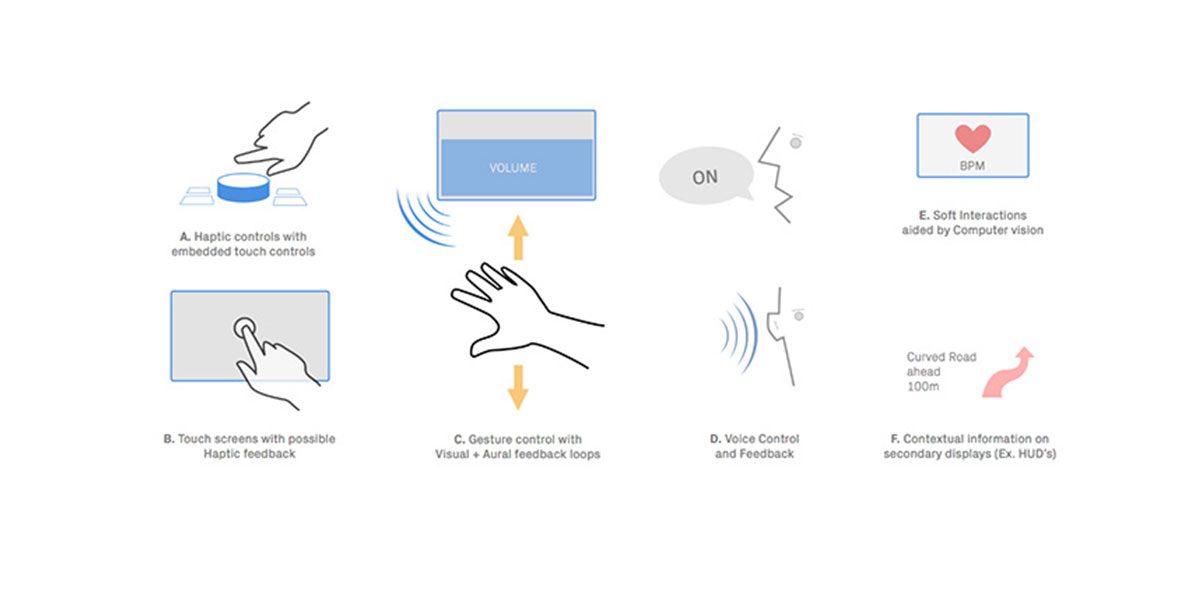
Humanized – Improvement of HMI Visual Design
In the future, the in-car HMI design should be based on the user's cognition. For the vehicle status and other information, more visual design will be used; more image/skeuomorphic style will be used; more simple, understandable and efficient prompts will be provided; complex, over professional and technical icons and terms will be avoided or reduced as far as possible to avoid the user staring at the screen for a long time, reduce the user's thinking and understanding time, and ensure the user's focus on the road ahead.
Humanized – Integration of Emotionalized Design
For drivers, the HMI in the future will be more de-mechanized and de-technicalized. The relationship between human and HMI is no longer the cold human-machine relationship. HMI will integrate more emotionalized design to reflect the human care and emotional interaction during the travel, increase the user's trust, and give the user more driving fun and emotional experience.
HMI Experience Design Trend - Personalized
In view of different people / automobile brands / usage scenarios, the in-car HMI needs to embody more personalized and differentiated design from functional service to interactive operation in the future.
Personalized – Differentiated Design for Different User Groups
At present, there are models and hardware configuration designs for different user groups, but the in-car HMI is still short of differentiated design for different user groups from functional service to interactive operation. HMI design needs to subdivide the users to locate major groups to be covered, and to excavate the characteristics, consumption concepts, regional differences, lifestyles, behavior habits, etc. of different user groups to provide diversified, personalized and differentiated products for automobile users.
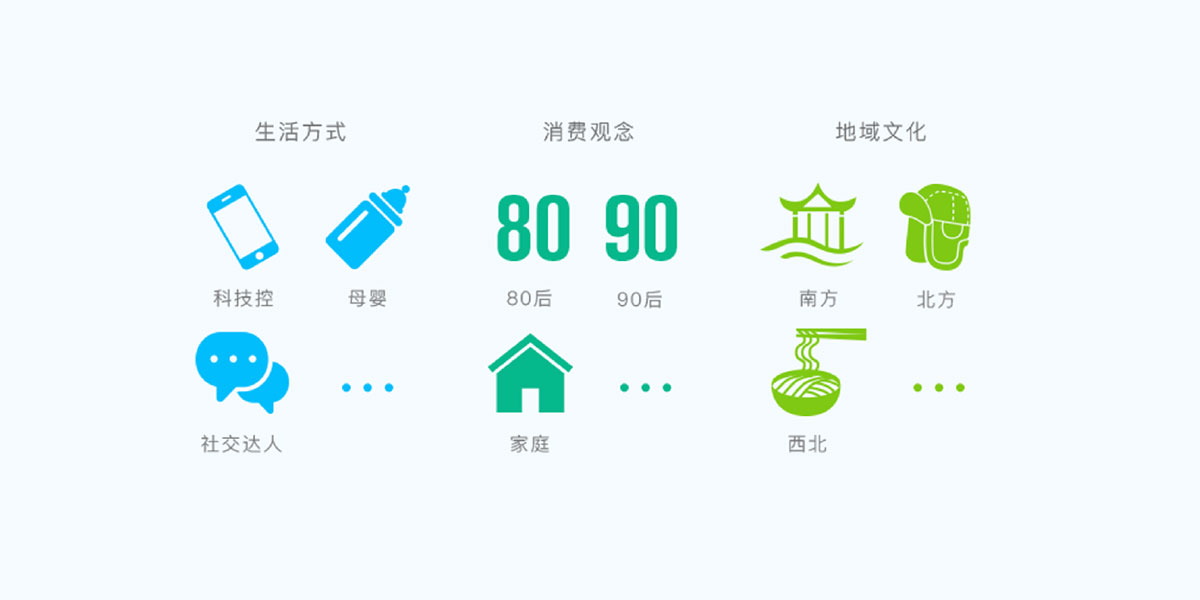
Personalized – Personalized Operating Mode
Under the background of more and more family cars and ridesharing in the future, the in-car HMI design needs to pay more attention to the application of "personalized interactive control".
• Different family members can remember and form their own interactive control mode and interface when using family shared cars, thus meeting their experience needs and driving habits.
• For the ridesharing, the facial recognition camera installed in the car can identify the driver's face features, judge whether to start the car, and automatically select the driver's personalized driving mode and HMI interface, achieving the operation according to the user's own habits. There will be a more imagination space for this function during the ridesharing or periodic lease in the future.
Personalized – Reflection of Brand DNA through Design
The current in-car HMI design in the industry tends to be homogenous, lacking the differential design that can reflect the brand image.
It is necessary to explore the characteristics of different brands, extract brand DNA, create brand story lines and run such story lines through the whole HMI design during the HMI design to realize the differential design and improve HMI brand recognition.
Summary
The ultimate goal of the in-car HMI design is to better integrate the information, provide travel services with a good user experience, and enhance the user's driving fun or operating experience during driving. However, compared with the user experience on the Internet, the most different design of HMI is its unique environment, which pays more attention to the driving safety.
Therefore, regardless of the development and innovation of HMI design in the future, there must be a balance between good user experience and safety. What's more, the safety is always the first.

在微信中搜索faceui
或保存二维码在微信中打开